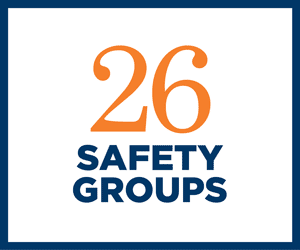Claims Training Solutions Part 2
Saturday, December 15, 2001 | 0
DEVELOPING NEW RESOURCES
The first article in this series addressed the shortage of qualified claims examiners in the workers' compensation field and the problems currently facing carriers in staffing and training . In this follow-up article claims examiner training specialists, Cynthia Koppany reviews some fundamentals in successfully building a continuing resource of talent, thereby reducing the total capital necessary for human resources.
-----------------------------
If a need for staff replacement or expansion is identified, the employer initially seeks skilled workers to fill available positions because of the reduced ramp-up time to optimum performance. However, because of a lack of examiner training in the past five years, experienced workers require an excessive capital investment. An experienced workers' compensation examiner may earn $55,000 per year. A contract examiner may command over $80,000. Alternatively, an examiner trainee enters the marketplace at around $30,000. Development of a trainee costs the employer $2000-5000 versus a recruiter fee of $5000-10,000 per head.
Successful development of trainees as a resource requires a continuing commitment from management to ensure an even flow of trainees into the marketplace. Increasing the available number of workers will reduce the per-head cost as supply meets demand.
Trainee candidates may be drawn from internal or external sources. Internal candidates have the advantage of some knowledge of workers' compensation plus familiarity with the employer's workflow, policies and procedures. External recruiting is more difficult and requires both a clear understanding of examiner skill-sets and successful interviewing techniques. Required skill-sets include common sense, multi-tasking, typing, business English, and an ability to handle detail.
Trainees receive intensive foundational training in statutory requirements and corporate policies and procedures. Classroom training may be provided by claims management or by specialized trainers. Using specialized trainers maximizes the claim managers' and supervisors' time by delegating educational responsibility for research, text preparation and delivery time. Management determines the length and scope of classroom training. Testing trainees monitors retention and identifies developmental needs. Outcome management assists the employer to refine selection techniques and program design.
At the successful completion of the accelerated training, trainees immediately assume responsibility for a limited caseload of files with continued close monitoring. On-the-job training continues at the branch level to reinforce basic skill-sets and develop an advanced understanding of legal requirements and company procedures.
Auditing the performance of the claims technical staff and providing targeted continuing education enhances the performance of the entire claims staff, reducing the potential for penalties and fines. Investing in employee development reduces staff turnover, resulting in fewer recruiter fees and reducing the contract labor expenses. Client expectations of claims handling expertise can be met. Bad faith claims can be reduced. The technical staff becomes an asset instead of a drain on company resources.
Author is Vice President in charge of Training for Cambridge International. She can be reached at ckcyndi_koppany@cisgi.com.




Comments